Ecstacy and agony:
Kandy’s glorious drummers and dancers fight
poverty and caste stigma
By Isuri Yasasmin Kaviratne
Uttama muni Dalada Wadammana
Mok pura ran nauka – balan saki
Sath samuduru gembare...
[Friend, behold the sacred, noble, tooth relic being brought
across the seven seas in celestial golden ships.]
– Dharmadasa Walpola
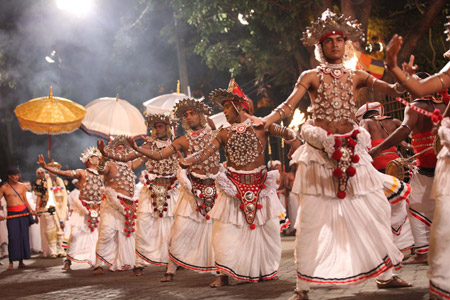 |
|
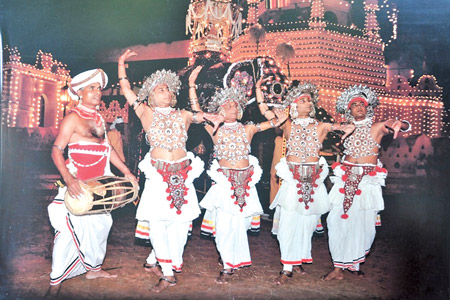
Peter Surasena with his three sons |
Thousand-year-old art forms, today, they are still performed as a
service - once feudal - to the great Maligawa, the Palace. They are also
an enduring practice of spiritual devotion where you commit yourself
unconditionally to the service of the holy – the Sacred Tooth of the
Buddha. This is the aura, the identity, of the dancers, drummers and
other traditional musicians of the Kandy Esala Perahera.
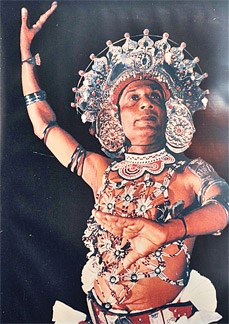 |
|
(Pix: Gamini Ranasinghe) |
These artistes, numbering in the hundreds, are immersed in both
sacred rite as well as the grandeur and pride of their performance in
the annual pageant at this time of the year. And bound by centuries-old
custom and training, it is a performance of integrity to the art and to
their faith. To all appearances it is a reverential, often spectacular,
performance in a magnificent event.
Or, so it seems, until one peeps into the lives of this cohort of
artistes to observe the struggle the traditional families go through to
maintain a millennia-old commitment but under modern socio-economic
circumstances very different from that of the ancient society.
Livelihood
For some, it is, directly, a challenge of income and livelihood. For
others, it is the social context that discourages the younger generation
from entering the traditional profession of their ancestors. For yet
others, it is the lack of assurance that these traditions will survive
the next fifty years. Some blame society, some blame the economy, some
blame the State for not looking after the traditional performers.
Many of the traditional dancers, drummers and other performers of the
Sri Dalada Perahera confidently date back their services to the Maligawa,
to the late medieval Dambadeniya Kingdom, the era of King Parakramabahu
II.
Four main traditional families are in charge of the drummers who
perform at the Perahera. O. P. Karunadasa from Uduwela family, is the
drummer who leads the drummers at the Maha Perahera, a job performed by
his father and grandfather before him. He says his life is dedicated to
the Maligawa, being the Chief Panikkirala, and assumes duties with
pride. “It is our duty to accompany the Karanduwa and as long as it is
on the roads, we stay close to it.” He explained that even if an
elephant starts behaving wild, the only people who are not allowed to
run for safety are the four Chief Panikkiralas and the Diyawadana Nilame,
whose job is to ensure the safety of the Sacred Tooth of Buddha.
Parading with him is G. A. Molagoda from the Molagoda family, who
admitted that their troupes are feeling the financial pressure that
their fathers and grandfathers were not subjected to. The Ninda Gam, the
villages ancient kings assigned for the traditional families to benefit
from their income, are not in use any more. Molagoda said, most of the
Ninda Gam are situated in Kurunegala and Matale districts and the
dancers and drummers are not in a position, financially and socially, to
frequent them. “Once upon a time, their ancestors might have got an
income from these lands but the world doesn’t function the same way
anymore. Most of these lands are now home to encroachers.”
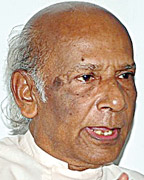 |
|
"We too have
committed our lives to the perahera, and we do so with the same
pride and honour as our father did...
It has become the most important objective in our lives, and we
commit ourselves to it”
– Peter Surasena |
The main occupation of these performers when Perahera is not in
season, is to sell flowers near the Maligawa. For those who take part in
the daily Thewawa, the drumming for the morning and afternoon religious
rituals at the Maligawa, are being paid for, but the others have
resorted to the flower business for their survival.
Introducing the Diyawadana Nilame to the audience, it is the Kandyan
dancers headed by Peter Surasena and his sons. They consider themselves
especially blessed for they are the performers that introduce, the
Kandyan dancers whose position in the Perahera is placed in between the
Karanduwa and the Nilame. Though financially more stable than their
fellow performers, Surasena is concerned with what the future might
bring to traditional dancers.
Kandyan dancing is not, in theory and practice, a dance that was
originally performed for parades. It was first performed as a
Shanthikarma, to cure the curse placed on King Vijaya that was
transferred to King Panduwasdevu after the death of the former. The
traditional Perahera dancers have mastered the techniques of performing
for two audiences on either sides while being on the move. Suresena
said, his team has the additional task of performing for four audiences;
people on either sides, the Diyawadana Nilame behind them and the
Karanduwa in front of them. However, it is this techniques the new
performers lack, though they are fully equipped with the theoretical
knowledge, he added.
Another life
 |
|
"It is our duty to
accompany the Karanduwa and as long as it is on the roads, we
stay close to it.” He explained that even if an elephant starts
behaving wild, the only people who are not allowed to run for
safety are the four Chief Panikkiralas and the Diyawadana Nilame.
– O.P. Karunadasa |
Susantha and Janaka Surasena are the two elder sons of Peter Surasena,
who have taken up the task of leading their troupe at the Perahera. Born
to such a family, living their lives around the excitement the season
brings, the duo claim they never knew another life, or wanted to seek
riches elsewhere. “We too have committed our lives to the perahera, and
we do so with the same pride and honour as our father did,” Janaka said.
The younger generation however, has realised that though they value the
life of a dancer, it will not be enough to live a comfortable life.
Janaka is an employee of the Nestle Company who, he said, have been
supportive of his performances, especially, during this season. Susantha,
who lives in Japan, visits Sri Lanka every year, to take part in his
family tradition.
“It has become the most important objective in our lives, and we
commit ourselves to it,” Susantha admitted.
Though the Surasenas are financially stable, they admit that many
dancers find survival difficult in the open economy and said better
support from the state would be welcomed.
As a society, the traditional dancers are not respected, though
during the days of the kings, they were treated with reverence, their
performances appreciated as well as their commitment to maintain this
centuries old tradition. Today’s society doesn’t give any assurance that
this art will prevail in the years to come, he said. Janaka’s son,
Suchira Nayanaja is one of the youngest dancers at the Perahera.
The 11 year old has been performing in the Perahera for three years
and has the same sense of pride his father and grandfather cherish about
their traditional lives. However, Janaka admitted that he is not sure
whether his son will be compelled to give up performing due to financial
reasons, when it is his time to settle down and start a family.
There are many government servants who apply for leave to perform in
the Perahera. Galagedara Samansiri is a graduate from the University of
Performing and Visual Arts and a teacher who preferred his traditional
family name, Kondadeniye Saman, as opposed to the village name given to
him instead.
Agreeing with Surasena, he admitted that what he learnt at the
university is no match for the knowledge he gained from his father and
grandfather and that’s the knowledge and practice he uses when
performing for the Perahera. “Here, about to perform in the Perahera,
I’m not better than anybody else, because I have a degree. Everyone is
equal with the traditional knowledge passed on to them.”
As a teacher, he earns a monthly salary, and knows his future is
secure with a pension after retirement, but he is sympathetic towards
his fellow dancers who do not have that luxury. “My main drummer doesn’t
have a proper house to live in, but has spent his whole life performing
this great art. These economic constraints have discouraged many
traditional dancers.”
 |
|
"Once upon a time,
their ancestors might have got an income from these lands but
the world doesn’t function the same way anymore. Most of these
lands are now home to encroachers.”
– G.A. Molagoda |
The perahera tradition is such that, after the Maha Perahera done by
the Maligawa, the four devala peraheras take to the roads, with their
respective Nilames.The Chief Panikkirala of Vishnu Devalaya is 21 year
old A. G. Saman Priyantha, who has, from an early stage in life,
committed himself to the traditions of his forefathers. However, his
father B. Piyadasa claimed, though happy, it was not his intention that
his son follow in his footsteps. Therefore, he took precautions to
protect him from the social stigma he might suffer due to his caste. The
ancient drummer caste, being positioned low in the oppressive caste
structure of the feudal social system, brings with the caste name, even
today, a most discouraging social stigma. So Piyadasa took the
precaution of giving his son a different family name.
“I was not sure what he would decide to do in his life, so I didn’t
want to give him my name, in case it’ll be a hindrance to advancements
in his life. I gave him the name of our village instead.” According to
Piyadasa, the social stigma is strong enough to forego the family name
in the generations to come. However, Saman is proud to be part of the
family of B. Piyasada, B. Kiri Ukkuwa and Balaya, his father,
grandfather and great grandfather. Piyasada only hopes that this
tradition would survive after his son.
Financially, he said, they are not well off. There are lands assigned
for them, but they hardly generate any income. The ancient payment
methods do not work in the modern days, and said they are thankful that
the administration of the Vishnu Devalaya has allowed them to run a
small shop, just outside the main entrance to the Devalaya, from which
they gain a daily income.
Meanwhile, Sri Dalada Maligawa assured that they do look after the
performers. Jayampathy Weddagala, the Cultural Secretary of Sri Dalada
Maligawa said, all the performers get a payment of Rs. 1,000 – 1,200 per
day during the season, together with accommodation close to the Maligawa.
He added that medical facilities are available for the performers during
this period.With a large number of performers taking part, the leaders
of each team is given the money, which they distribute among themselves.
“They are given special monetary gifts too, after the Perahera season.
Individually, they may have problems, but it is impossible to address
them. We do everything in our power to take care of them.”
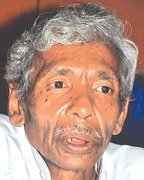 |
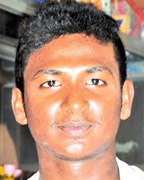 |
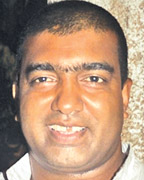 |
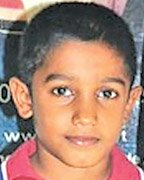 |
 |
| B.
Piyasada with his son |
A. G.
Saman Priyantha |
Kondadeniye Saman |
Janaka
Surasena with his son Suchira |
He said, the recent initiative to start a dancing academy for the
young boys and girls from traditional families is one of them. The new
academy would provide a good platform for the youngsters to learn the
art of traditional dancing and they can study up to degree level at the
Academy.
The Ninda Gam are not bringing any income, Weddagala said. One reason
for it is the dancers stopped visiting those lands, and cultivating
them. “Without putting an effort, it is difficult to expect an income,”
he added.
The Ministry of Cultural Affairs was not available for comment
despite several attempts to reach them. |

